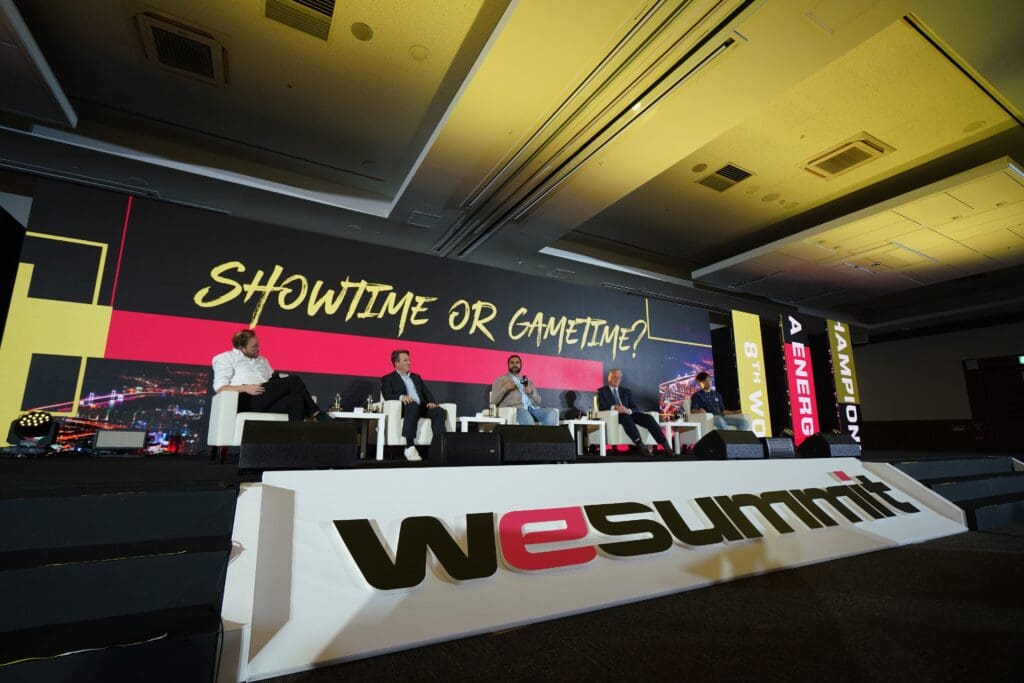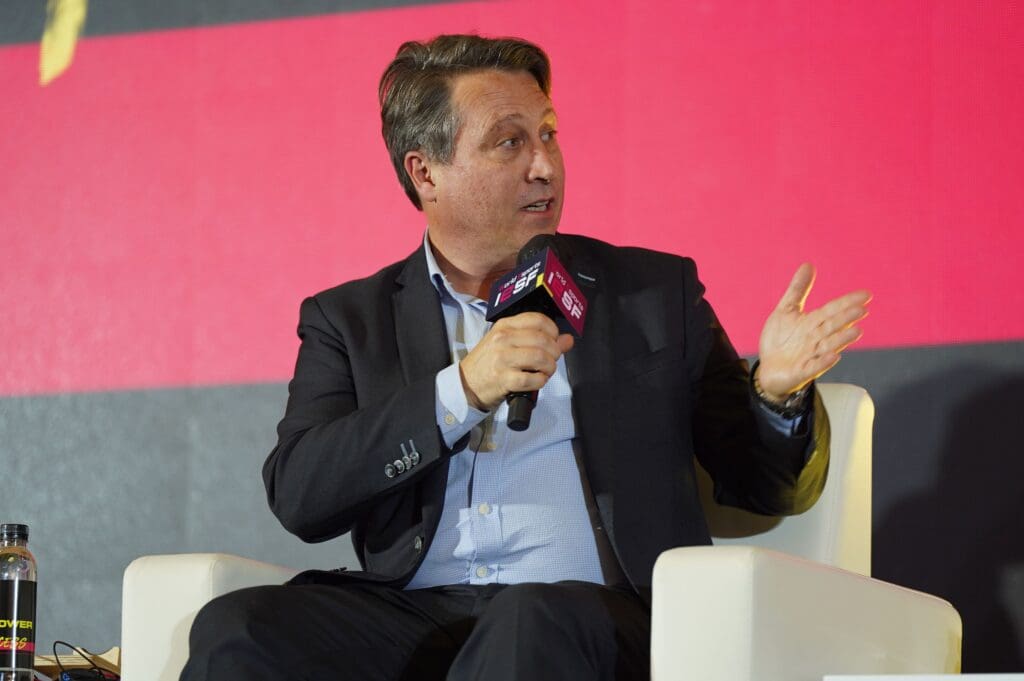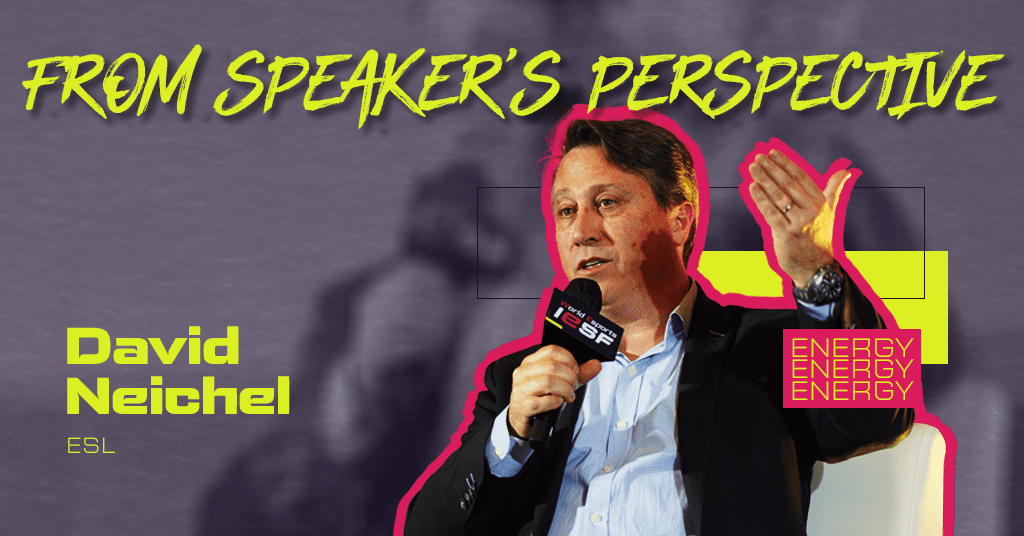Esports is both entertainment and competition, can you mix it? Esports is first and foremost a competitive practice of video games. This is at the core and exactly what differentiates Esports from simply playing. And at the same time, the competitive aspect is precisely what makes it an enjoyable entertainment. Competitiveness is what triggers the entertaining side of gaming.
Let’s take an easy parallel with sports. If you play beach volleyball with your friends, you can simply throw the ball and enjoy the moment of doing nice gestures… but very fast, as we are all human beings, we will start counting the points or adding certain challenges to the game, like never letting the ball drop in the sand. As soon as we start counting the points it becomes much more entertaining for the players, there is more adrenaline and there is more at stake. And if some people are watching, there is suddenly a narrative, which becomes really captivating.
Playing games can be a fun distraction, but as soon as we all start competing, beating our own best score, defeating the next-level bosses, and especially as soon as we start measuring our performance or playing against each other, this is becoming ‘extra entertaining’.
From the most hardcore PC games to the most casual mobile mini-games, what matters is the gameplay, the fact that we play again and again until we improve our results, and what brings the most fun, of course, is when we play with friends and challenge each other.
How not to lose focus from the competitive part of Esports while focusing on viewership and spectators? A tournament organizer can do many things, bring the most famous casters or pop stars on stage, bring the biggest fireworks or massive LEDs for a theatrical experience … it will never be as entertaining for the spectators and viewers as the competition itself.
There is a straight correlation between the viewership and tickets sold to spectators and the level of the competition. The highest level of professional teams and athletes is what generates the biggest audiences for events. This rule applies universally…
So as long as an Esports event organizer, keeps the competition and the players at the center of everything, it is the best way to satisfy the community and beyond. Everything else can be useful to enhance the competition. Still, it remains only a nice paper to wrap up the most important, which is the competition, the main gift for the audience. And by the way, it is what makes Esports unique.
Even a simple set-up with a simple stage, 2 random people playing Street Fighter 6 against each other, and one screen can be super captivating for an audience. Of course, when it is the most famous players on the planet playing on amazing stages, it is even more fascinating… but basically, the narrative for the show is the same.
WHAT THE PUBLIC DOESN’T SEE
Most Hilarious Behind the Scenes Moments, Production, logistics, technology, and stage design in creating a seamless experience. What the public very often doesn’t see is all the process that leads to the big stage moment. The production, the stage, and the broadcast are the tip of the iceberg… before that, there was a full process that has often started one year earlier end involved a lot of people.
Among the most important aspects is of course the whole qualifying phases that sometimes start month in advance. One thing that often the public doesn’t is the whole players experience in the days before the event.
Pro teams are constantly traveling around the world, so the full travel and hospitality experience is important, when they arrive a few days before the start of the competition we need to build up for each of them a safe training space, usually inside a hotel as well as making sure that they can keep up with the their usual diet on physical exercising habits.
Another aspect, that we as audience sometimes forget, is how the capture of the game inside the game is obtained… for example in a game like fortnite or PUBG Mobile, where there is no proper observer mode, we have a team of observers whose job is to be like camera men or women inside the game.

The supervisor for the in-game observer team has a very crucial mission, to always anticipate where the action will take place. It is not like a simple football field, with limited dimensions and cameras at every corner, the maps can be massive and change all the time.
What people often do not see, is very fortunately when something goes wrong and it doesn’t affect the show. I remember a big final for Counter strike in Katowice Poland, in 2018, where there has been a power cut in the whole city, and the secondary powerstation immediately took over.
Since the cut was lasting, the team even had to bring in a fuel-truck that was there in reserve in case of emergency to refill the secondary power station… No-one in the audience or watching the live stream even could imagine that the whole city had been in the dark for a while, because the show was absolutely not impacted… this in such situation that we can value the great work done by the logistic and operation teams, which is not directly visible but crucial for the run of the show.
Most hilarious is usually, how creative the community and fans can be during events. For example Australians fans drinking beer out their shoes, which is now a tradition, or how the DOTA fans celebrated on social media Dr. Sulaiman Al-Habib, who was one sponsor for the Riyadh Masters 2022.
CHALLENGES AND ADVANTAGES OF ONLINE VS OFFLINE EVENTS:
Online competitions are of course easier to organize. It is by the way the bread and butter for most Esports organizers. It still requires referees and community managers to certify a good quality. Maybe at some point AI will make it even easier. We run every day a massive number of competitions via FaceIT for example. The zero to hero aspect of Esports, where everyone can climb the ladder, everybody can be somebody, is my point of view the main reason for Esports universal popularity.
Broadcasting is adding more complexity of course and more costs, but it is what makes Esports content available to anyone across the world. Before 2011, it was always a complicated process and except here in Korea, where you had several TV-Channel fully dedicated to Starcraft, or with the World Cyber Games, that I think where early on on TV, it was difficult in other territories.
Even if some competitions like Intel Extreme Masters existed since 2006, they were not really accessible live to everyone. What changed everything is the arrival of social media in 2009 and even more importantly, the arrival of Twitch in 2011. Suddenly, it became easy to play a match and broadcast both the game and what happens in the room with a small piece of equipment…
FAIR PLAY:
Integrity and Fair Play is absolutely a key to Esports. It is what makes it possible for any roster who has the skills, the hard work and motivation. Sometime a young team can come out of the open qualifiers and make it to the top, like for example the Finnish team ENCE, who finished second at the IEM Counter Strike Major in 2019.
These are the Cinderella stories we all like. It is essential to fight against any form of cheating, match fixing or performance enhancing substances. EFG works in this spirit with ESIC, the Esports integrity commission, as well as most of the industry does. The fairness for the competition is what makes Esports entertaining, it is very different from some other for of entertainment like wrestling, which tend to become more a show rather than a sport. In this regard, in Esports, it is always down to the skills and tactics of the players.

WHICH EVENT HAS BEEN THE BIGGEST CHALLENGE SO FAR:
Probably the first edition of Gamers8 in Riyadh. It was professionally organized by the Saudi Esports Federation and we have supported them for some part. It was a big challenge for everyone in a sense that no-one had ever done an event that lasts 2 months with so many different games, top level professional players and teams at such a scale and for such a high production quality.
Of course it has continued to grow and will continue now with the EWC. But I think reaching this milestone for live event of such a scale in 2022 for the first time was a great challenge and we are proud that it was a great success, for the players, the communities and the audience.
ABOUT THE CHALLENGES AND OPPORTUNITIES OF HOSTING EVENTS IN DIFFERENT REGIONS AROUND THE WORLD:
Hosting events in different regions around the world has become much easier, now that we have production teams on every continent and employees based in more than 50 countries. The main constraint is always about time zones and how to pick up a time that can satisfy fans all over the world simultaneously, which is impossible of course.
Some will have to wake up early or stay late at night to watch…The other constraint is still the “lag” that prevents from making a competition with professional teams playing together from different continents. We still miss a “satellite-based’ server system for example, or a specific fiber-wire connecting different Esports infrastructures on several continent.
The opportunity is that we can produce (have done it already) a content that never stops: starting with Asian-Pacific teams and studios, moving on the Europe and Middle-East and then to North & South American teams.
We basically could make a competition that lasts 24 hours with as seamless handover from continent studios hosting different teams and serving the regional audience with the relevant teams to crown one after the other, regional champions.


